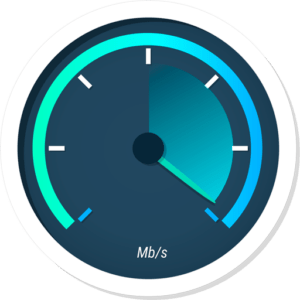 This article addresses how the quality (speed) of a viewer’s Internet connection relates to their QoE (Quality of Experience) when it comes to watching live streaming video.
This article addresses how the quality (speed) of a viewer’s Internet connection relates to their QoE (Quality of Experience) when it comes to watching live streaming video.
The Internet speed needed for streaming video smoothly is generally much higher than you might expect & depends on a number of factors.
Bitrates: We recommend that to watch even moderately high-definition video a viewer needs a bit-rate of anywhere from 1.5 to 5 Mbps to take advantage of the high quality. That said, Live Webcasters like us could broadcast using a lower speed (often under 1 Mbps) to make sure the videos are accessible to most viewers (Standard-definition or SD video can use a lower bit-rate — 0.6 to 1.0 Mbps) but that would mean that other viewers who have much faster connections would be deprived of the benefit of watching in high definition at full-screen resolutions. If you are experiencing issues that look like they are caused by a slow internet connection (e.g. frequent buffering or even freezing) here are some steps we can recommend to fix the problem. Recommended Internet Speeds: According to Netflix, a viewer’s internet speed should be significantly faster than the video’s bit-rate. Netflix recommends speeds of: Note that these speeds are roughly twice the recommended upload bit-rates for the different qualities of video, and that’s a fair rule of thumb. So to explain, if we were to broadcast 720p HD video at the lowest possible bit-rate of 1.5 Mbps (megabits per second), you would need an Internet connection that allows at least 3 Mbps or more. The FCC recommends a 25 Mbps broadband speed for households that stream video. While many high-speed broadband internet connections do meet these requirements on paper, not all homes or offices have this available. Rural areas or crowded areas for example may not be able to match this speed. Practically speaking, the problem is that a number of factors can reduce the actual internet connection speed. If you are having trouble seeing live streaming videos and your basic internet connection is high enough, one or more of problems could be affecting actual speed. Here are some reasons for Internet Slowdowns: Your “on-paper” internet connection speed is just a theoretical maximum number and not a reliable practical speed to go by. It is impacted by a number of factors, some under your control and others beyond your control.
Here are a few steps we can recommend to improve performance:
a. Is it fairly central to all users?
b. Is the line-of-sight path not blocked by something that might interfere with radio signals?
c. Are other household devices interfere with WiFi? Cordless phones and wireless security cameras are common culprits. This happens with devices that use 2.4 GHz or 5.8 GHz, which are also common router frequencies. Lower-frequency phones and cameras aren’t so problematic. Your viewers can resolve this by switching to a different frequency for either the interfering devices or the router.
All of this assumes you are watching the live stream at home on a high-speed internet connection. If you are away from home, things may be quite different.
Watching video on a WiFi connection at Starbucks, McDonald’s, the public library, or a hotel WiFi connection, creates a lot more potential variables. The speed of the connection itself varies depending on the number of users sharing that connection at any given time or – even by the time of day when more viewers are likely to be using the same connection. You are going to get slower downloads when the cafe or hotel is packed with people all accessing the network at the same time than at slower times.
So to recap, as a general rule you should have an internet connection speed at least twice the broadcast speed that you are using. On paper, most of you probably do. In practice, though, this may not be the case. You also need to be aware of the difference between theoretical bandwidth and the actual, reliable minimum speed a system delivers.
Knowing all the factors that reduce your internet speed, can help you in terms of being able to watch a live streamed webcast without interruption.
